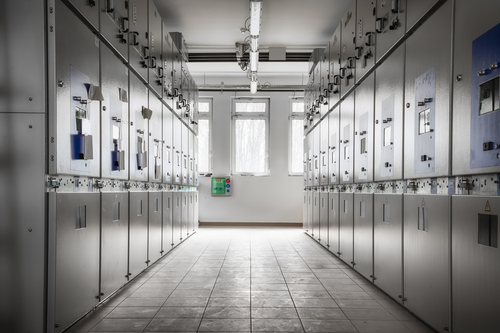
Benefits from using control cabinets heating
Control cabinet is a necessary element of industrial power systems and it is used to arrange and systematize instrumentation composing the system. Correct functioning of the measurement instrumentation housed in the control cabinet depends on humidity and temperature conditions inside the cabinet. What is the function of heaters and why they are necessary for the correct operation of the devices?
What is a control cabinet?
In some industry sectors, application of control cabinets is necessary for safe operation of the whole automation and power system. Control cabinet is a casing that houses the whole necessary control instrumentation. It allows arranging equipment composing the electrical system and ensures proper safety level of its operation. Control cabinets guarantee many benefits such as:
– option to arrange the instrumentation composing the electrical system;
– protection of system and instrumentation operation;
– protection of the instrumentation against mechanical damage and adverse impact of conditions inside the industrial hall or the environment, such as rain, dust, etc.;
– protection against unauthorized personnel.
Temperature and humidity conditions
Sensitivity of the instrumentation composing the electrical systems requires provision of proper conditions inside the control cabinet. It is necessary to guarantee proper humidity and temperature inside the cabinet, because electrical and electronic subassemblies should operate within suitable temperature range and environment deprived of humidity. This is important from the standpoint of efficiency and proper operation of the devices. Outdoor cabinets are exposed to water steam condensation. A necessary process to ensure proper inside conditions is heating the control cabinets – this is a perfect protection against freezing, because the temperature is maintained above the dew point.
What are the heaters for?
Water steam condensation is a natural process resulting from temperature changes inside control cabinets as well as within all closed measurement systems. Destructive impact of humidity causes corrosion and may lead to creeping currents that disturb or preclude correct operation of the devices inside the cabinet. Maintaining proper temperature range is therefore key for correct operation of the whole system. Heating the control cabinets allows removing humidity and maintaining suitable temperature without necessity to apply other automation devices. Benefits and costs related to purchase and installation of the heater are disproportionate to possible faults and damages that must be repaired.
How to select suitable heater?
The type of the applied control cabinet heater depends on many factors that must be considered during its design. It depends on the type of instrumentation inside the cabinet. Considerations must include operating conditions of such devices, i.e. maximum and minimum temperature as well as maximum air humidity. Density of instrumentation inside the cabinet is also an important factor affecting the parameters of the applied heating. Notice that the area of the radiator generating heat should be adequately large to release heat from the heating element to the control cabinet interior.
Principles of heater selection
Control cabinets heating depends on the conditions that should be provided for the correct operation of the heater. These include:
– adequate value of the heat transfer coefficient of the casing (k);
– climate according to DIN 50015;
– loss of installed power inside the control cabinet (p);
– suitable selection of the heater power (P);
– humidity and temperature regulator.


 pl
pl  EN
EN  DE
DE  LT
LT  SV
SV  FR
FR  ES
ES  HU
HU  NO
NO  DK
DK  FI
FI  RU
RU 